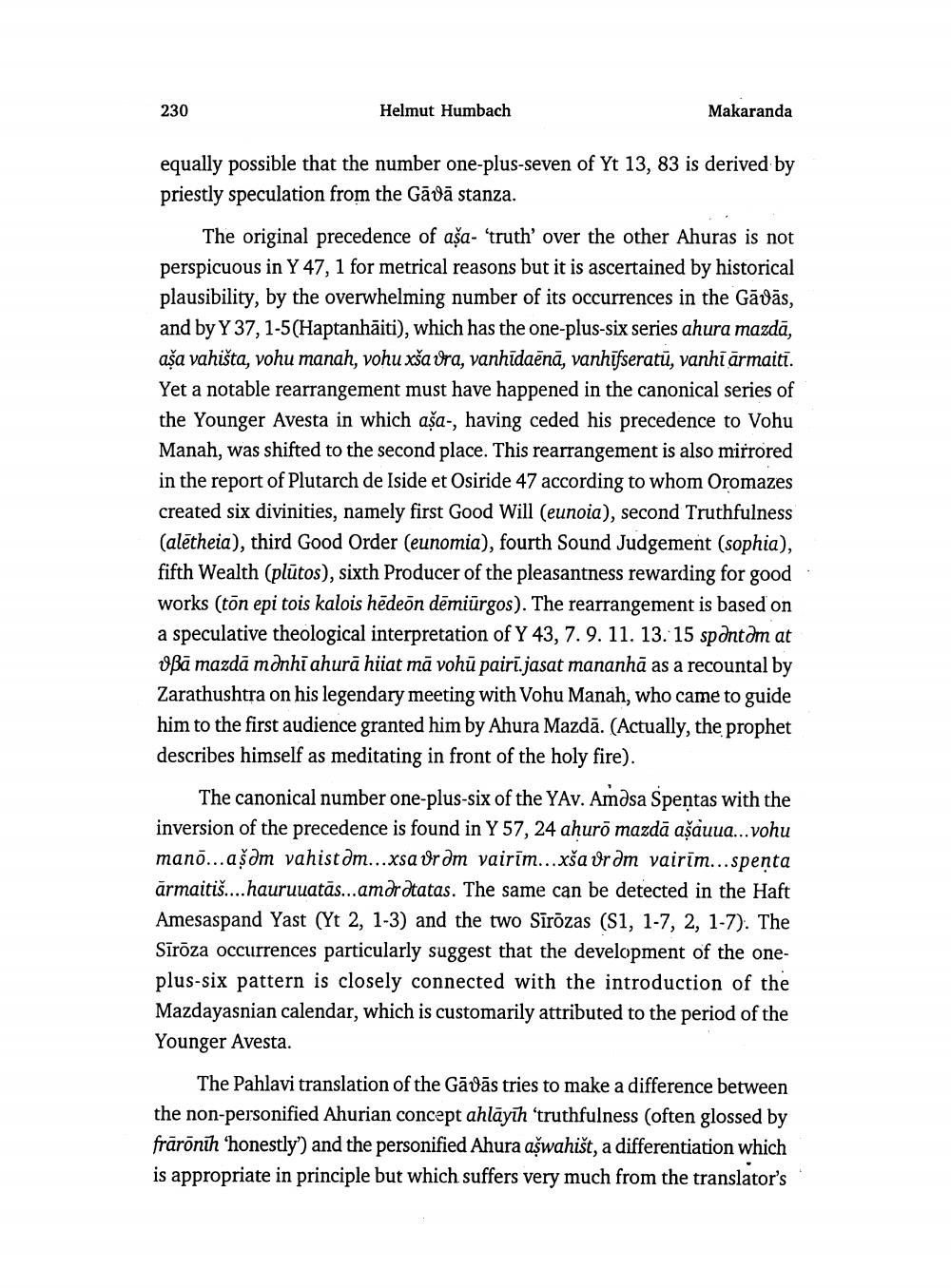________________
230
Helmut Humbach
Makaranda
equally possible that the number one-plus-seven of Yt 13, 83 is derived by priestly speculation from the Gävä stanza.
The original precedence of așa- 'truth' over the other Ahuras is not perspicuous in Y 47, 1 for metrical reasons but it is ascertained by historical plausibility, by the overwhelming number of its occurrences in the Gāvās, and by Y 37, 1-5 (Haptanhäiti), which has the one-plus-six series ahura mazdā, aša vahišta, vohu manah, vohu xša vra, vanhīdaënä, vanhifseratü, vanhî ārmaitī Yet a notable rearrangement must have happened in the canonical series of the Younger Avesta in which așa-, having ceded his precedence to Vohu Manah, was shifted to the second place. This rearrangement is also mirrored in the report of Plutarch de Iside et Osiride 47 according to whom Oromazes created six divinities, namely first Good Will (eunoia), second Truthfulness (aletheia), third Good Order (eunomia), fourth Sound Judgement (sophia), fifth Wealth (plutos), sixth Producer of the pleasantness rewarding for good works (ton epi tois kalois hedeōn demiürgos). The rearrangement is based on a speculative theological interpretation of Y 43, 7. 9. 11. 13. 15 spontam at Bẞā mazda manhi ahura hiiat mã vohū pairi.jasat mananhã as a recountal by Zarathushtra on his legendary meeting with Vohu Manah, who came to guide him to the first audience granted him by Ahura Mazda. (Actually, the prophet describes himself as meditating in front of the holy fire).
The canonical number one-plus-six of the YAv. Amosa Spentas with the inversion of the precedence is found in Y 57, 24 aḥuro mazdā ašȧuua...vohu mano...ašom vahistom...xsa ordm vairim...xša oram vairim...spenta ārmaitiš....hauruuatās...amoratatas. The same can be detected in the Haft Amesaspand Yast (Yt 2, 1-3) and the two Sirōzas (S1, 1-7, 2, 1-7). The Sīrōza occurrences particularly suggest that the development of the oneplus-six pattern is closely connected with the introduction of the Mazdayasnian calendar, which is customarily attributed to the period of the Younger Avesta.
The Pahlavi translation of the Gåväs tries to make a difference between the non-personified Ahurian concept ahläyih 'truthfulness (often glossed by frärönih 'honestly) and the personified Ahura ašwahišt, a differentiation which is appropriate in principle but which suffers very much from the translator's




